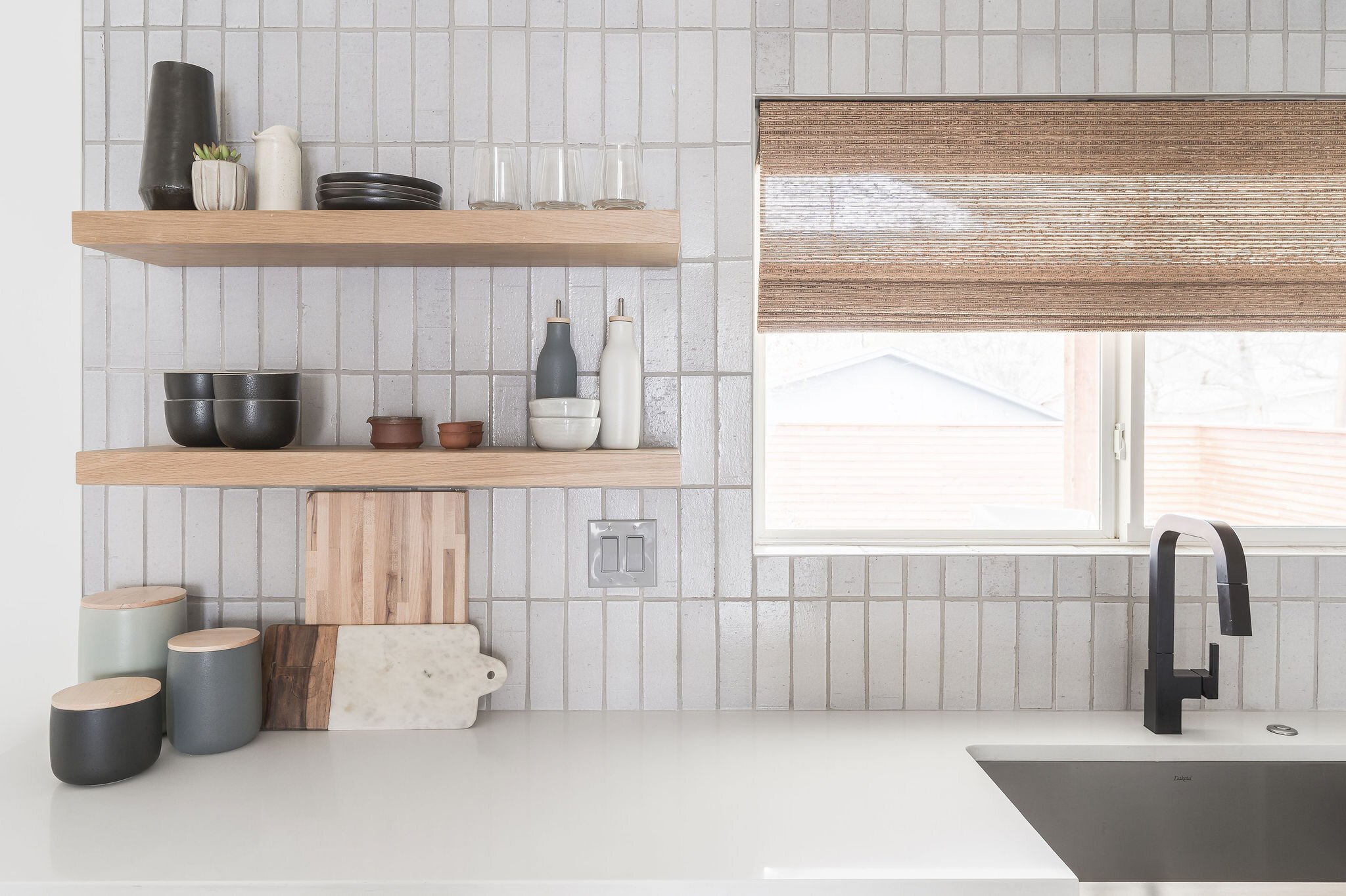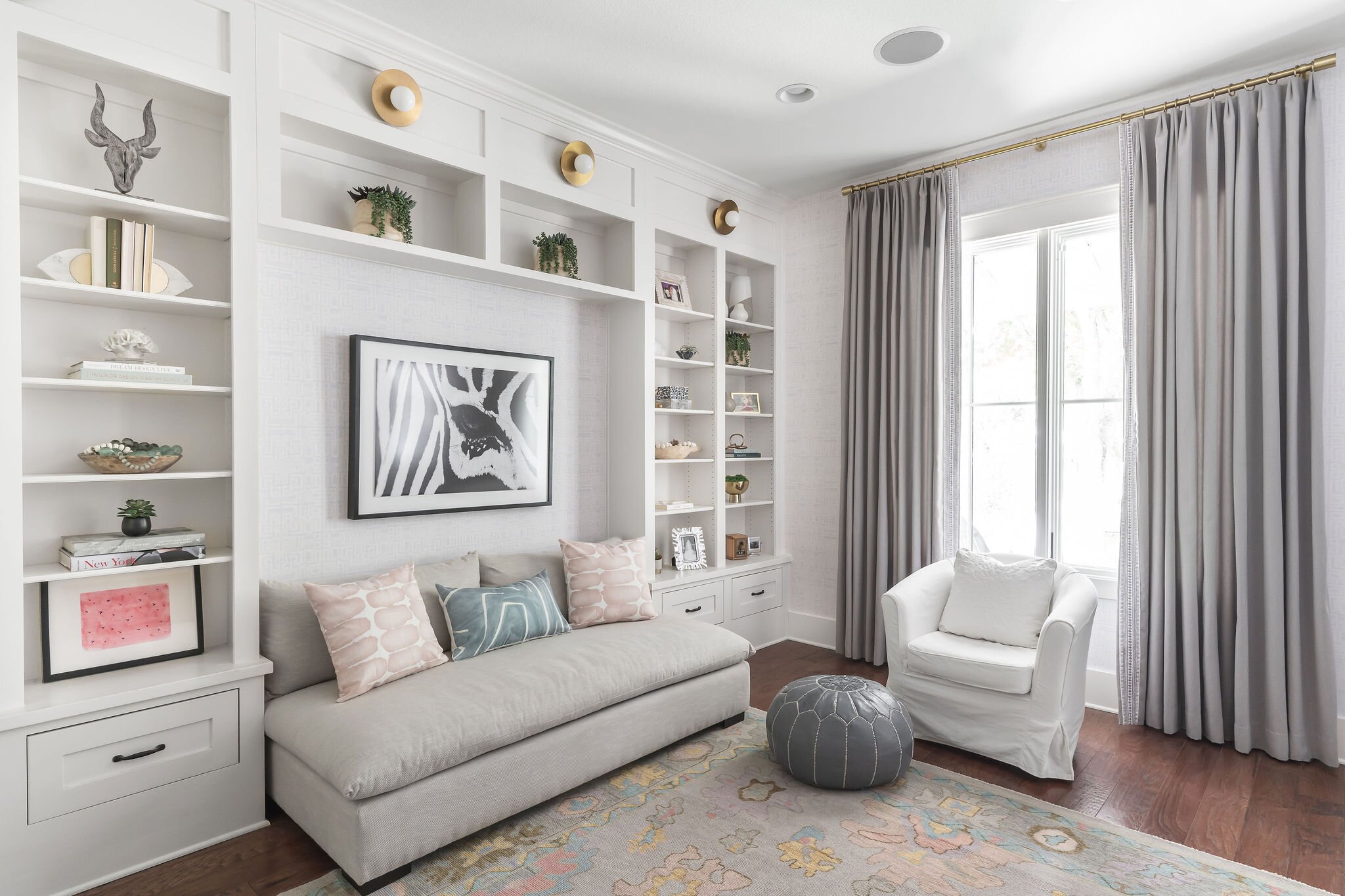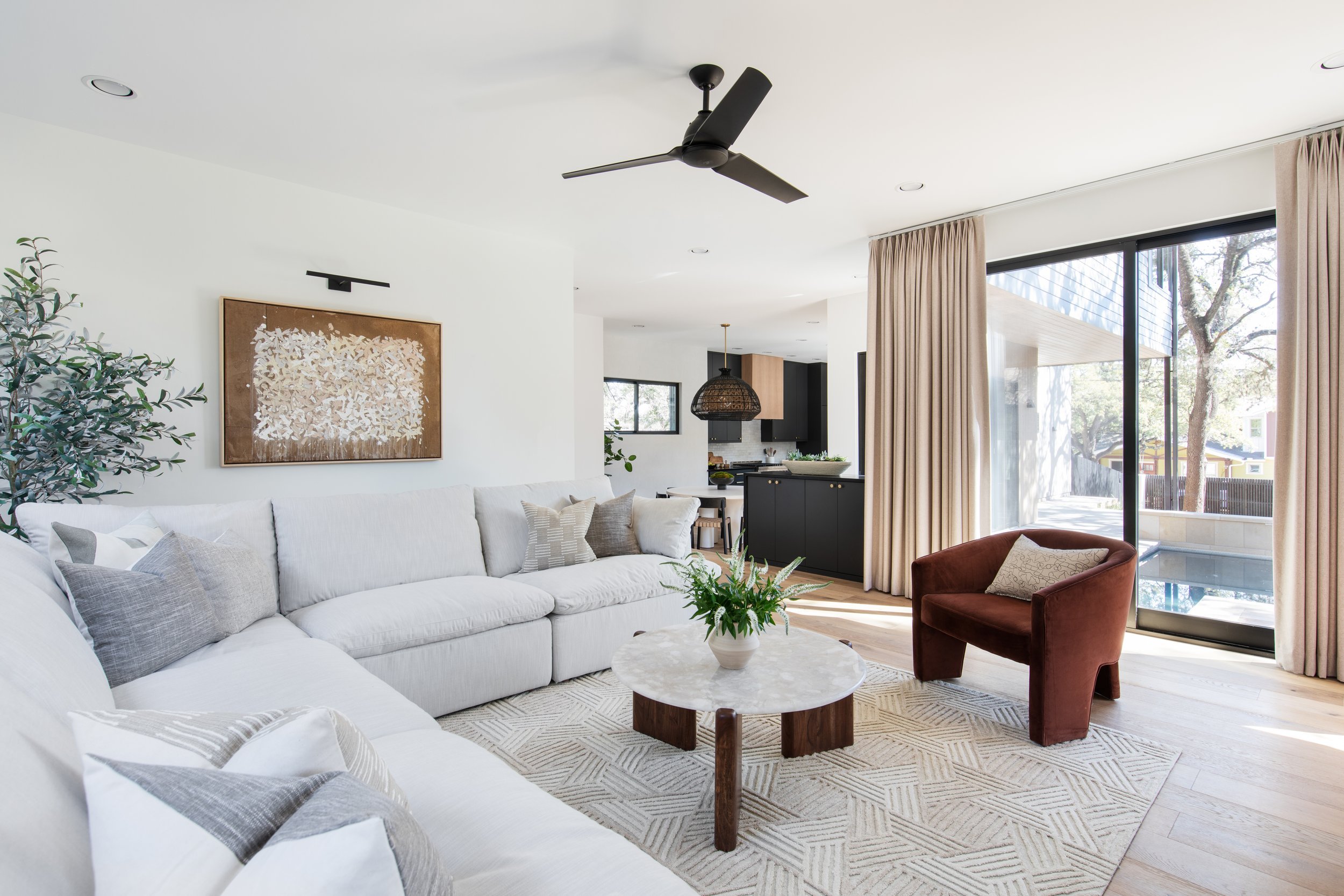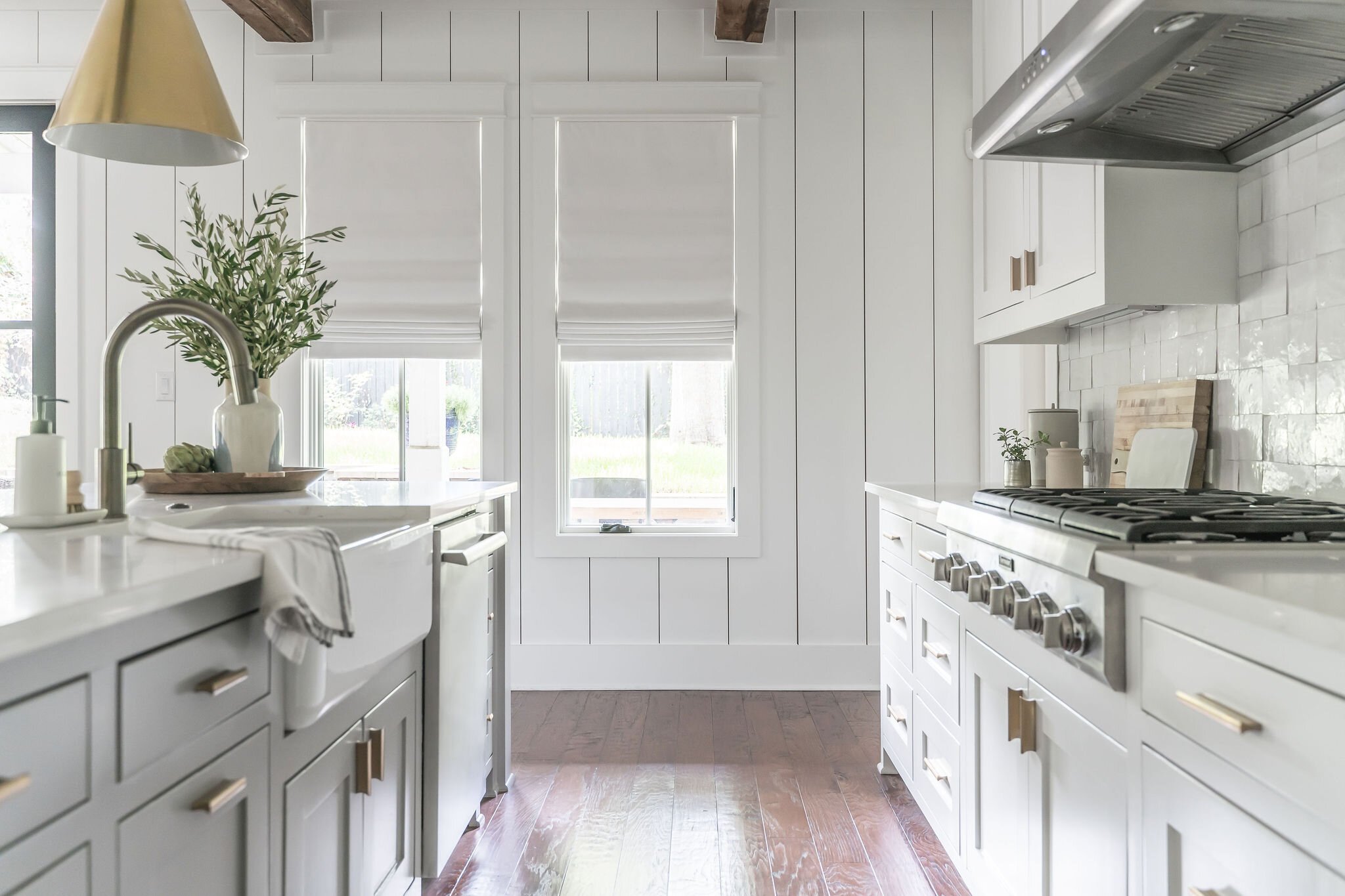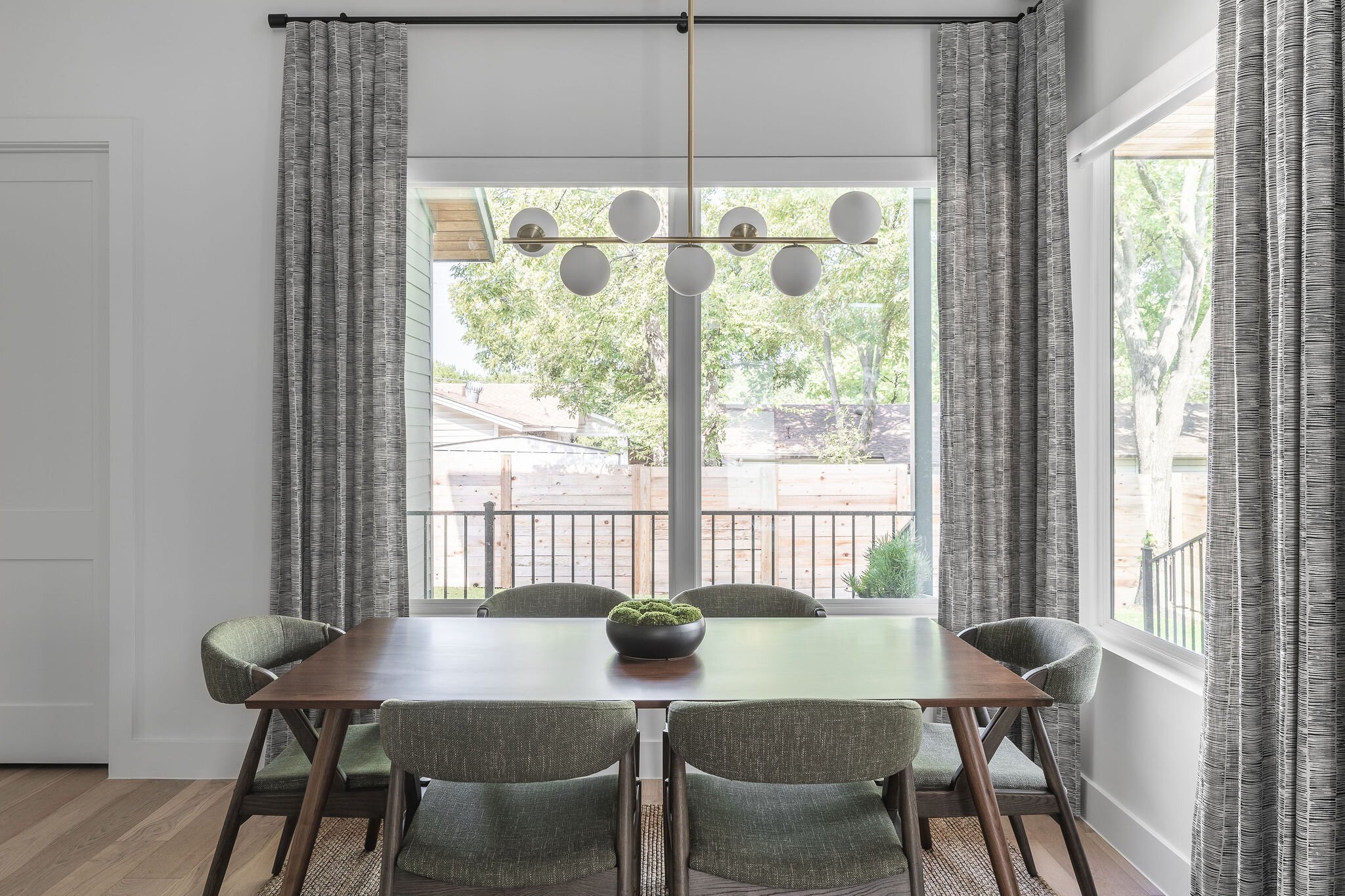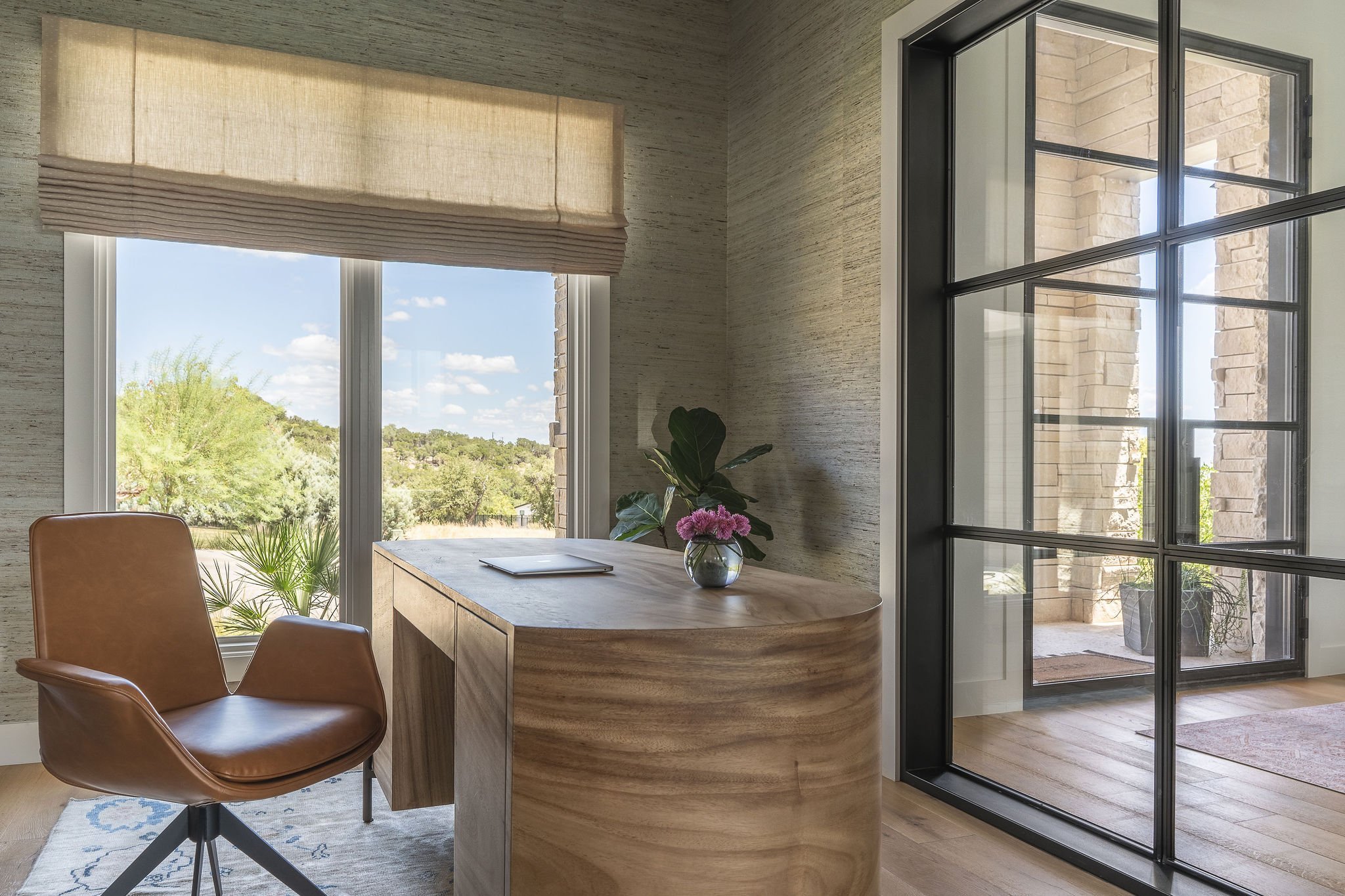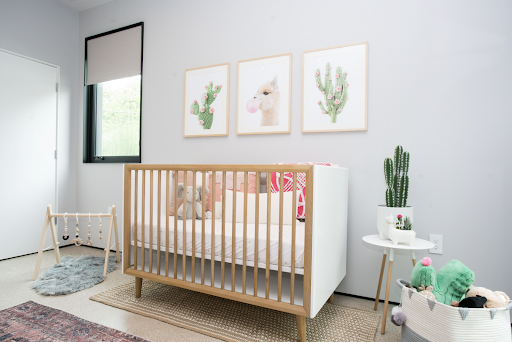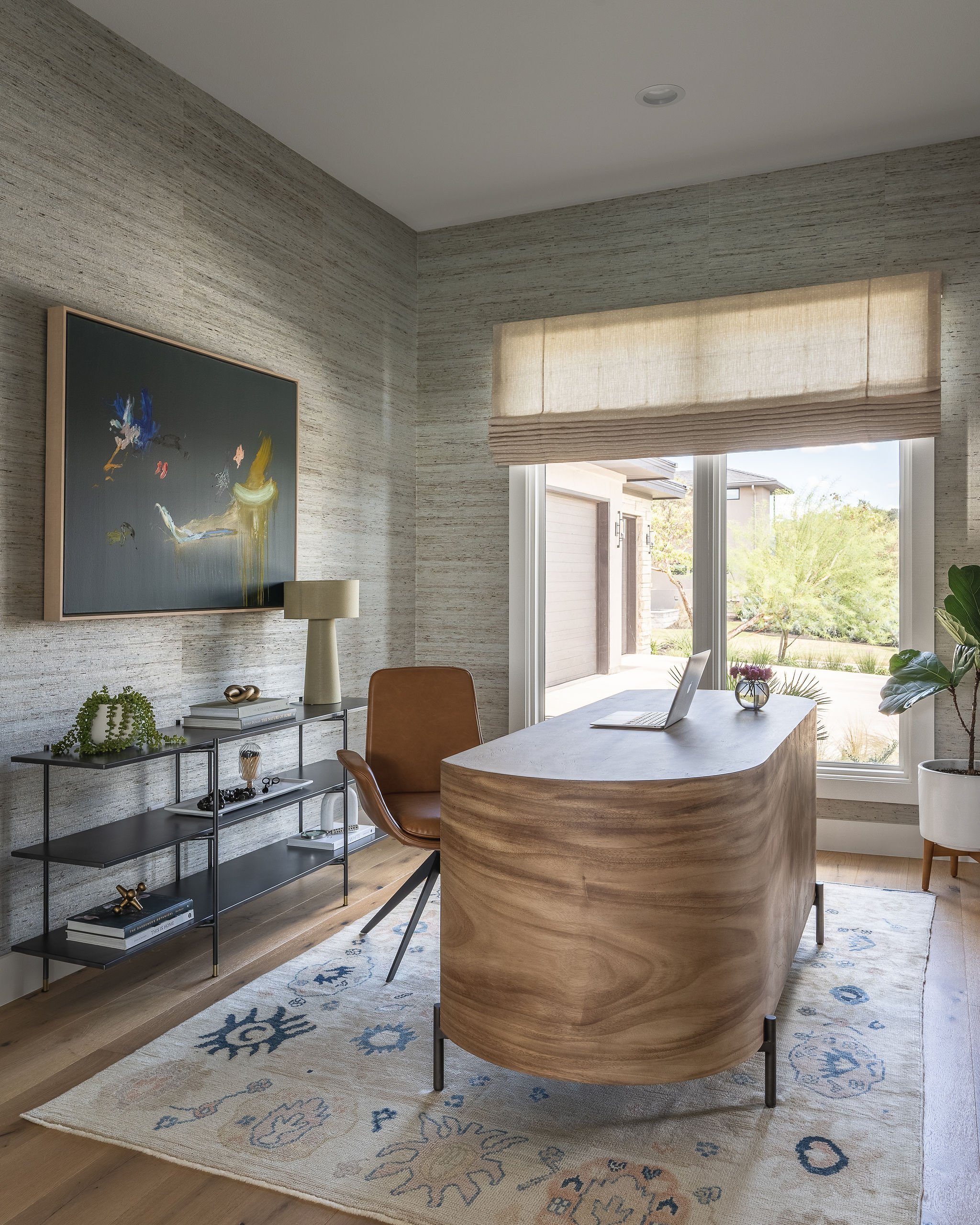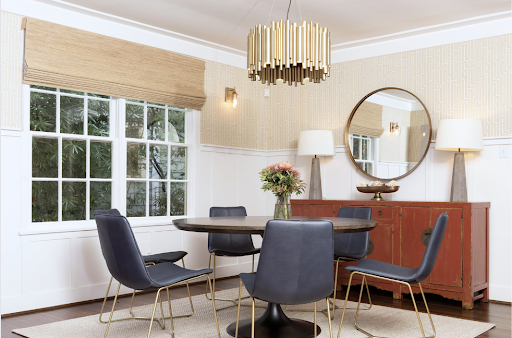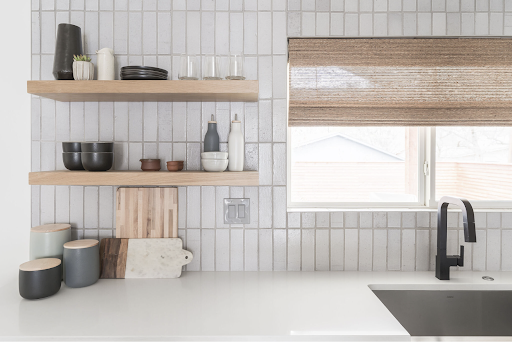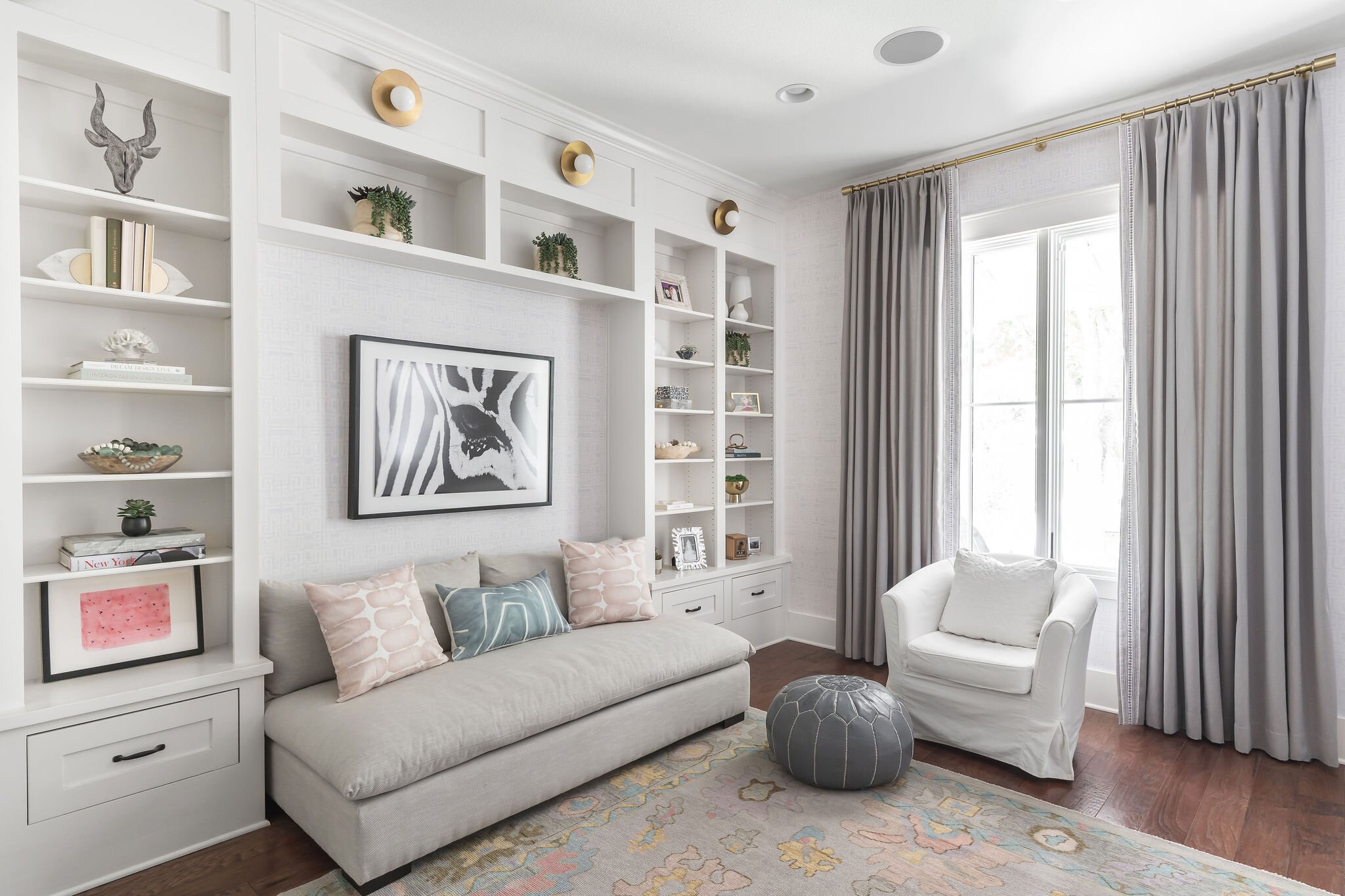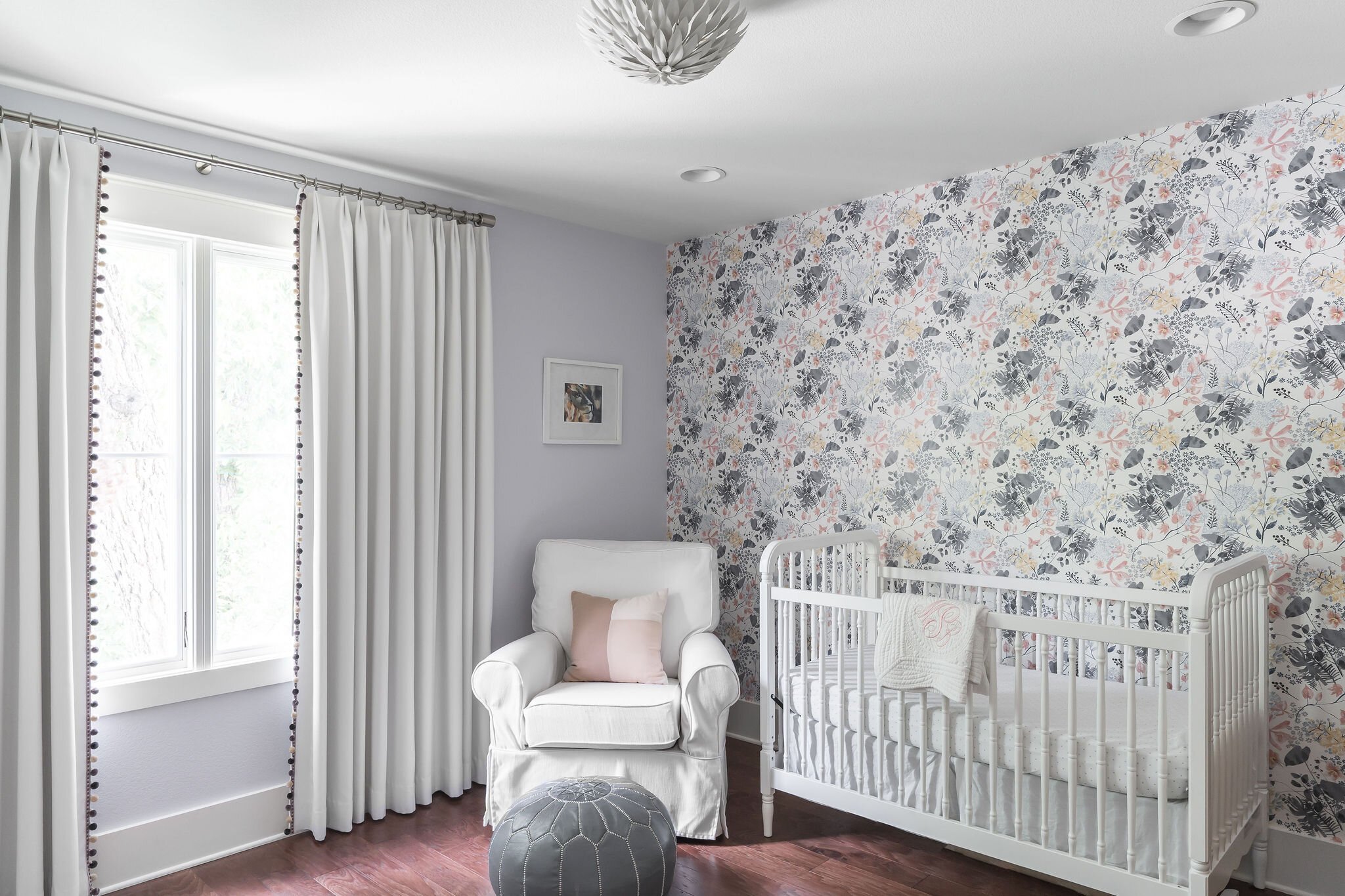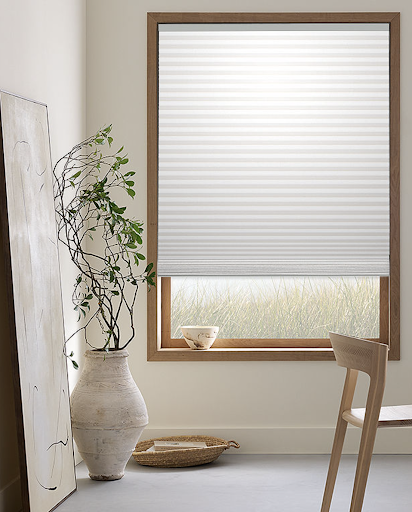Our Top 6 Window Treatment Recommendations for a Functional and Stylish Home
Though they may seem like an afterthought, window treatments have significant aesthetic and functional jobs for your home. On a functional level, they give you privacy, allow you to control the amount of natural light in your home, and provide insulation to help keep it warm or cool during the winter and summer months. Aesthetically speaking, it’s a great way to introduce color, pattern, texture, or warmth into the space. Selecting the right window treatments can make all the difference between a perfectly polished home and one that looks incomplete.
When it comes to getting new window coverings, there are plenty of options out there. You may be wondering which is the best type for your home. That’s why on the blog we’re reviewing everything you need to know about window treatments including which factors you should consider and what types of window treatments we recommend for our clients.
What to Consider When Choosing a Window Treatment
Before you decide on a type of window treatment, there are several factors you’ll want to think about to be sure they meet your needs. Consider the following questions:
Do all the windows in your home need coverings or only certain areas and rooms?
For each room consider — what’s the role of the window treatment? Mostly aesthetic? Mainly functional? Or both?
Do you want to use the same type of window coverings throughout your home or add variety?
What’s the style and color scheme of your home?
What’s the room function and what types of window coverings will support those needs?
How much light do you want to let in or keep out? What sort of privacy level do you require?
Asking yourself these questions will help define your criteria and narrow down the selection of window coverings to choose from.
The Best Window Treatment Types
Among the sea of options out there, we rounded up the top 6 window treatment types we recommend. We have defined each type of window treatment along with its benefits, so you can get a good idea of what will work best in your home.
For a modern sleek look, roller shades are a great option. They lay flat and roll up easily for a clean, minimal aesthetic while maximizing your view. They come in a wide variety of colors and textures, with light filtering or blackout options for optimal privacy. Their customizations include:
Valance vs. no valance — A valance is a decorative element that conceals and hides the shade’s roll and creates a more finished look. It also acts as a nice border frame for the top of the window.
Cordless — This option allows you to lower or raise the shades by tugging outward at the bottom of the shade. Cordless function offers a seamless look without cords or beaded chains, as those are typically standard.
Inside mount vs. outside mount — Roller shades can be mounted either inside or outside the window casing. Inside mounts offer a cleaner and more modern look, as the shade fits inside the window frame. Outside mounts are installed over the window frame and cover the window trim when lowered. This option is most common when adding a valance.
Blackout liner — If you want maximum light control and to block out light completely, a blackout liner will do the trick. It’s an opaque lining added to the shade and is best for bedrooms or media rooms.
Motorized/automated — Electric or battery-powered shades are controlled with a hand remote or app on your phone for operational ease from your bed or sofa — so there is no need to get up!
For a clean and modern look in the kitchen of our East 7th Street Home, we installed cordless roller shades that were inside mounted with no valance. We hung these on the “reverse roll” which means that the roll isn’t visible when the shade is rolled up. For the nursery and all bedrooms, we selected the same shades for consistency but added a blackout lining.
At our Farmdale Lane project, we installed roller shades that were inside mounted with a valance and cordless function. The valance hid the roll that would have been exposed since these were not installed on a “reverse roll”.
Roman shades are a classic and versatile window treatment. The fabric options are endless and fully customizable, allowing you to introduce a pattern, add a border trim, or choose a highly textural fabric to liven up your space. Like roller shades, they can be installed on a cord, beaded chain, or cordless system that you simply tug at the bottom to raise and lower. Unlike roller shades, the fabric gathers at the bottom of the shade creating stylish folds as the shade is raised.
We went with Roman shades for the kitchen of our Beverly Road project in solid white. This space already had a lot of visual interest, so this window treatment option was best for a clean look.
For the bedroom of our Rough Hollow project, we selected a neutral taupe color to add some contrast to the white walls while still coordinating with the color palette for the room.
In the office of our Serene Estates project, we went with an outside mount Roman shade in a subtle dotted pattern that added texture and pulled color tones from the rug, and balanced the space nicely.
Typically made from woven bamboo, jute, or seagrass, woven wood shades add texture and warmth to a space. They’re durable, offer good light control, block out UV rays, and can be blackout lined for added privacy. They operate like a Roman shade, folding up when raised. You can also add a motorized option for added convenience.
We went with outside mounted, blackout lined, woven wood shades in the dining room of our Bryker Woods project, and inside mounted with no liner in the kitchen of our North Hampton project. Both add another layer of texture and visual interest to these spaces.
Solar shades operate like roller shades but are made with a specialty mesh fabric that blocks UV rays while still letting sunlight through. They’re great for protecting your furniture from too much direct sunlight, while still allowing you to enjoy natural light in the space. The downside is that they don’t offer as much privacy as the other window treatment options.
Solar shades come in a range of colors and opacity levels (depending on how much light you want to let in) and help keep your home cooler during the summer. They also reduce glare, making them great for rooms with TVs or computers.
These were the best choice for the living room, bedroom, and office windows of our Bouldin Creek project. The homeowners were not worried about privacy level, as their home was on a private lot and they wanted to let in as much natural light as possible while blocking harmful UV rays. We selected a black solar shade that faded away into the black window trim when fully opened, and we installed them throughout the home for a consistent modern look.
A traditional window treatment option, drapery (also known as curtains) consists of fabric panels that are suspended above the window frame and can be pulled open or closed with a wand that you pull left and right. This style is extremely versatile for a range of aesthetics and works best for larger windows. Like Roman shades, drapery fabrics come in endless colors, patterns, textures, and weight options. You can add a blackout lining which works well for bedrooms. You can also add a sheer drape on a double rod for a layered look.
There are a few different installation options based on the look you want, these include:
Rod — The drapes hang from the rod by rings or fabric pockets. There’s also a grommet option where the rings are embedded in the top of the fabric like large eyelets.
Track — Drapery track systems are made of plastic or metal and the fabric is attached to the track rod with hooks so that the drapery panels glide smoothly along the track. Having your drapes installed on a track offers a seamless look. This option can also be motorized.
Along with the installation method, drapes have different pleating options. Our go-to styles are ripple pleated drapes or a 2-fold tailor pleated drape.
We’ve included drapery in many of our projects including the S. 4th Street dining area. The drapery here helps define the dining zone as separate from the kitchen and living areas in this open-concept space, giving this area its own personality. This was a great opportunity to pick a patterned fabric that added some texture and depth while complimenting the color scheme in the nearby spaces and softening the bright white walls.
In our Beverly Road project, we went with a 2-fold tailor pleated drape for the playroom and nursery. For the drapery in the these spaces, we added a tape trim for more interest that also coordinated with the colors in both rooms and added a playful touch.
For the living room of our Bouldin Creek project, we installed a warm taupe color wool blend fabric on a 3-fold tailor pleated drape that was blackout lined and installed on a ceiling-mounted, white track system for the glass sliding doors. They block out light when needed and allow for additional privacy.
Also known as honeycomb shades, cellular shades are another popular choice. They’re made of at least two panels that are threaded together giving them the honeycomb 3D shape. This shape helps with insulation and regulates room temperature as it traps hot or cold air. They also come in a range of colors including light filtering to blackout options.
Cellular shades can also be installed top-down and/or bottom-up. This means instead of just lowering them from the bottom, you can lower them from the top too, allowing for light to come in the top half of the window. Roman and woven wood shades also have this capability but it’s less common.
Image courtesy of The Shade Store
Feeling inspired by these window covering examples, but still struggling to choose the right ones for your home? Cameron Getter Design is here to help make the selection process easier. We’re an Austin-based full-service design firm, and we take on a range of projects from new construction and renovations to furnishings and decor refreshes. If you’d like to elevate the design of your home and transform it into a space you love, then get in touch with us today!

